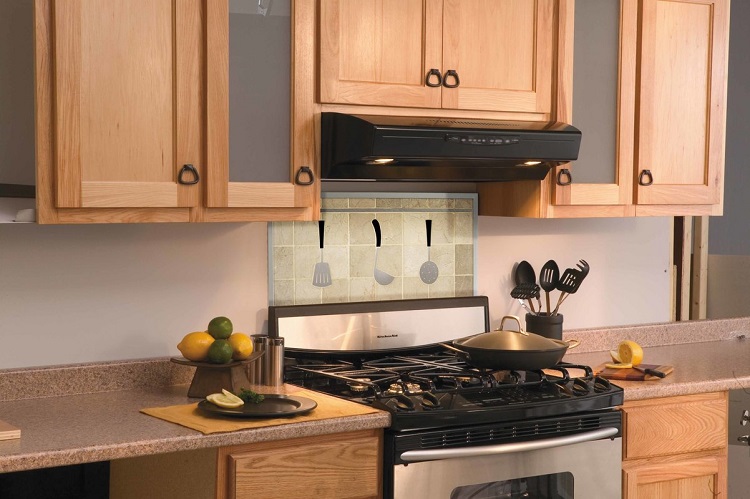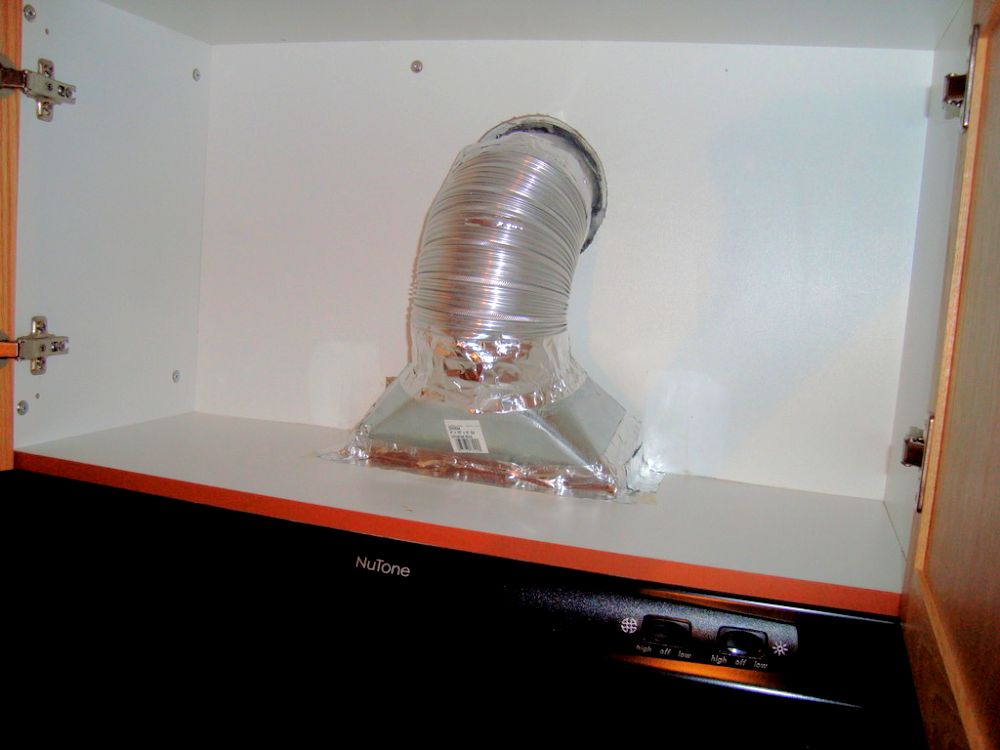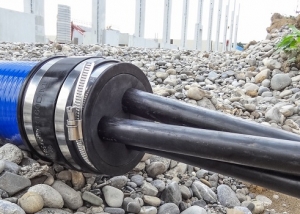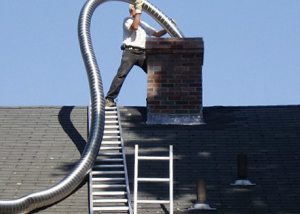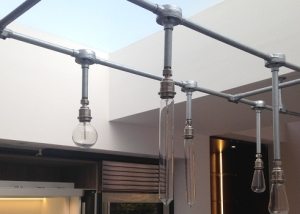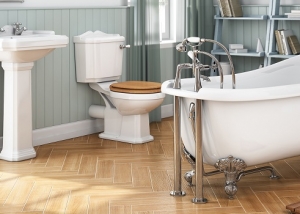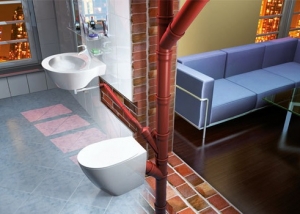A hood in the kitchen is installed as an element of modern ideas about safety and comfort. Through a pipe from the hood in the kitchen, strong odors are removed that are formed during cooking, smoke, fumes, polluted air. When installing a flow hood, the problem arises of how to hide the pipe from the hood so that it does not look like a “foreign body” in the interior.
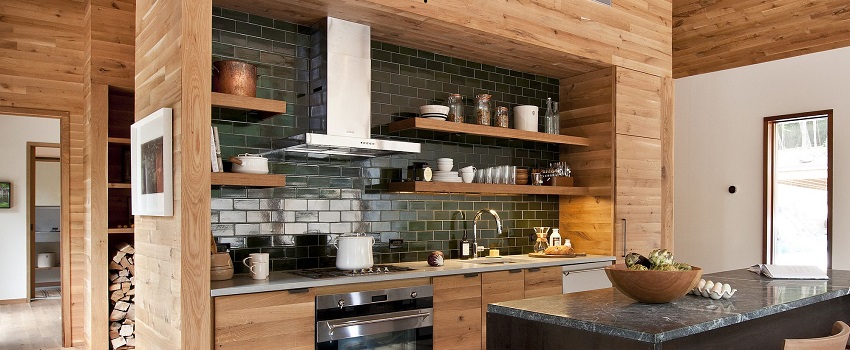
So that the corrugation from the hood does not spoil the interior, you can mask it in different ways
Content
How to hide a pipe from a kitchen hood
The problem that arises with the need to close the ventilation channel in the kitchen can be eliminated initially in several ways:
- The acquisition of a circulation hood. In such a ventilation system for the kitchen, you don’t need to hide any elements, since it is designed according to the principle of cleaning the air inside the structure, and not removing it outside the room. The variety of circulation hoods in terms of materials, dimensions and color solutions used in the execution is so impressive that it will not be difficult to choose a product that fits into the interior. But the design requires care, consisting in periodic cleaning and replacing filters, and its cost is quite high.
- Appeal to the services of firms supplying kits, in which the hood and corrugated elements are initially made plain. In this case, the duct pipe will not protrude from the interior as a completely foreign component.
- Close the problem by replacing the corrugation with an air duct made of plastic, fortunately, they are offered in different shapes and colors. Without further ado, a white plastic product is purchased, it is given the desired color.
Note! There may be difficulties with the functioning of the system if the ventilation in the building is weak. Then the flat plastic construction will not cope with air purification in the kitchen.
In such ways, it is possible to solve the problem arising from the fact that the corrugated pipe of the ventilation duct of the hood can in no way be fit into the existing interior of the kitchen space.
If we are talking about acquiring a new kitchen, then it will not be difficult to mask the corrugation, acquiring a design equipped with a protruding visor. Behind it, an element pressed against the wall will be hidden, not wishing to fit into the interior.
How to hide a corrugation from a flow hood in the kitchen
When purchasing a flow-through ventilation treatment in the kitchen, it is worthwhile to think in advance how to hide the corrugation from the hood. You can place it in the most visible place so that it is not striking, like something alien. That is, you need to organize the space surrounding the corrugation so that it looks completely organic in it. This is quite possible if the kitchen is made in hi-tech style, when metallized elements emphasize the style of decor. Or equipped with a loft, for which the presence of metal structures is quite natural.
If a firm decision is made that the pipe should be removed from the field of view, then it is possible to resort to the following options:
- equip a protruding visor that reliably hides the pipe pressed against the wall.In the old kitchen, such a visor can easily be turned into an interesting element of decor;
- place the corrugation over a suspended or suspended ceiling. An alternative to this solution may be the arrangement of one of the elements of the ceiling with additional lighting equipment. Such placement will reliably mask the corrugated element, but at the same time create obstacles to access to the duct. If there is a malfunction in ventilation, you will have to start disassembling the false ceiling, which will lead to significant costs;
- close with a plastic box. Plastic boxes are available in different sizes and in different colors, equipped with built-in lights. Plastic boxes with spotlights are used as decoration components;
- put in a box, creating something like a two-level ceiling. The box is created using aluminum profiles fitted with drywall. Such a design can be an integral part of a two-level ceiling or can be performed as an element included in it. As an element of the interior, the drywall box opens up a wide scope for the manifestation of design research. It can be attached to the ceiling and / or walls, take the desired shape and be equipped with lamps;
- install in a hanging cabinet. It is purchased in a style appropriate to the existing kitchen, or as an extra when buying a new kit.
Important! The first method can only be used if the distance between the hood and the vent hole is small. With a large distance, the installation of a plastic box will adversely affect the outflow of air.
After which several installation operations are carried out:
- In the upper and lower parts of the cabinet and in the shelves, holes are cut through which the corrugated pipe will be passed.
- The hood is attached to the cabinet. In this case, the working surface of the hood is left outside, and the design itself is attached to the bottom and inner shelves.
- The corrugated pipe is attached by one of the sides to the hood, and the second is drawn through the previously made holes, heading to the ventilation shaft. With a considerable distance to the ventilation shaft, it is possible to use a system of hanging cabinets, through the side walls of which a corrugated product is horizontally passed. In this case, the possibilities of using the interior space of kitchen cabinets will be significantly reduced, but the pipe will be completely hidden. Or combine the placement of the hood in a hanging cabinet with camouflage masking using one of the previously discussed methods.
- The hood is covered by a panel made under the cabinet door.
Do not be afraid that the charm of a cozy kitchen will be broken by a corrugated pipe stretching from the hood. There are several ways to organically fit it into an existing interior or create a new one.
